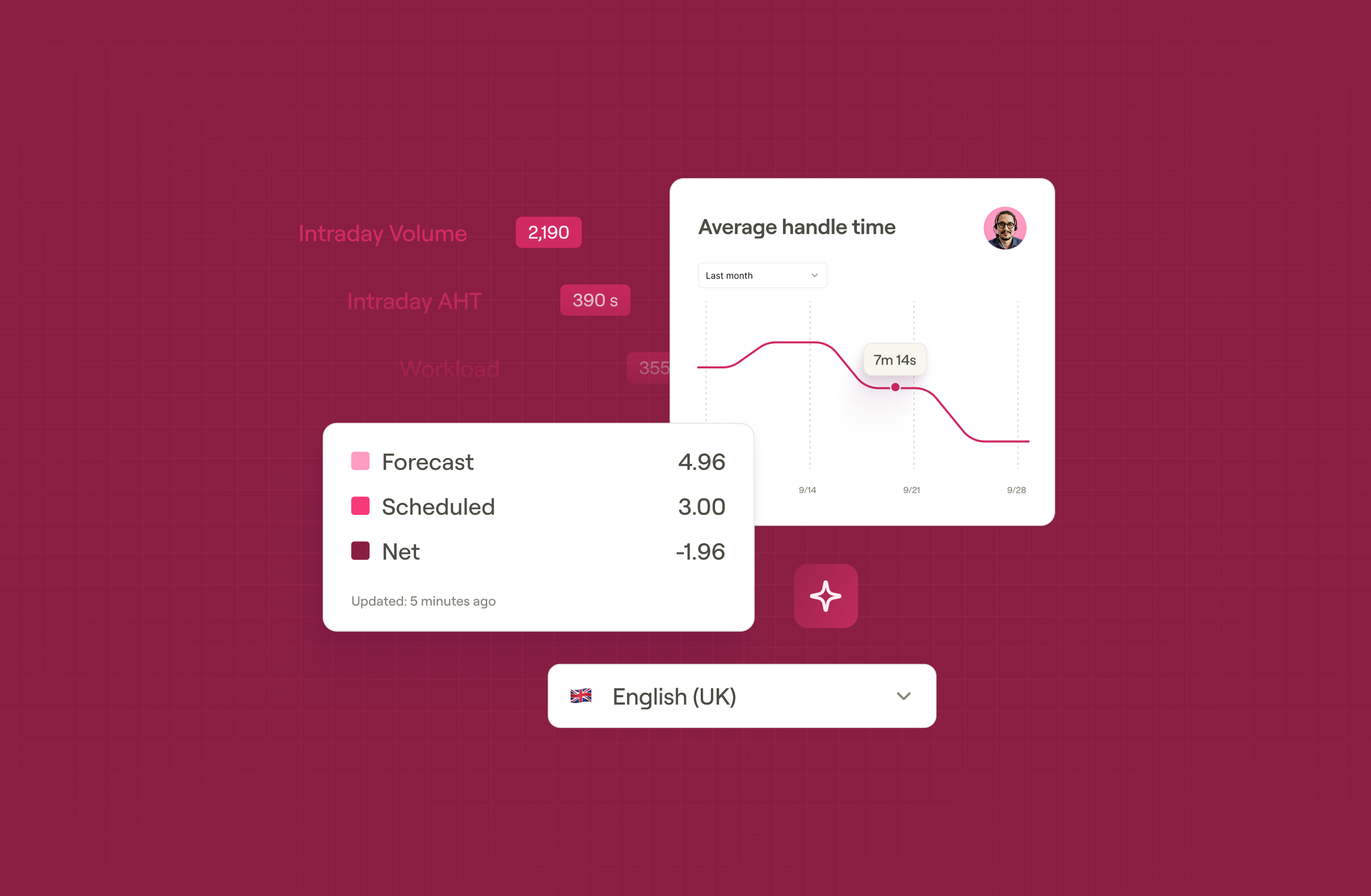Effective workforce management involves numerous interconnected elements. Workforce scheduling stands as a key component that encompasses several critical factors, including request management. This blog will explain what request management means within workforce scheduling and why implementing effective processes is essential for your organization.
What is request management?
Request management refers to the process where agents request schedule changes and the evaluation of these requests, through either automated systems or manual review processes.
Request management processes can be hands-off, with admins establishing specific rules that shift requests must follow for automatic approval—or they can require manual review by an admin for each request.
As automation has become central to workforce management processes, many request management needs are now handled automatically, particularly in enterprise-scale organizations.
The impact of request management in WFM
Manual request management can be inefficient and inaccurate for large organizations, consuming valuable time and resources for admins while likely creating scheduling gaps.
Workforce productivity hinges on several processes, request management being one of them. Without it, your organization may face:
- Operational inefficiencies
- Employee retention issues
- Hidden costs from inefficient processes
- Poor customer experiences
Effective request management systems can alleviate some of these challenges, providing organizations with benefits like:
- Increased efficiency in handling employee requests
- Reduced administrative burden on managers
- Improved employee satisfaction through faster request processing
- Better maintenance of operational performance and service levels
- Enhanced transparency in the request approval process
- Enhanced scheduling accuracy based on changing business requirements
Key components of an effective request management system
Organizations lacking automated request management systems face risks of scheduling inaccuracies and inefficiencies. When selecting workforce management software, evaluating the request management functionality is crucial—an effective system saves time for both employees and administrators while reducing frustration.
Here are a few essential elements that make up a robust, automated request management process:
- Automated workflows and routing mechanisms
- Customizable rules that guide automation based on company needs
- Approval hierarchies with waitlists for manual admin intervention, when needed
- Real-time and intraday performance tracking
Aspect Workforce includes a robust request management system with customizable checker rules to provide the schedule coverage organizations need throughout the month, week, or day.
But what are these rules and how can they be customized to meet your business needs?
Core request management rules in Aspect Workforce
Aspect Workforce includes a variety of rules that can guide request management automation. The "heavy lifters" of request management include three types of rules:
Group allowance rules
These rules determine how many people from a particular group can be off at the same time. Group allowance rules provide the following scheduling benefits:
- Ensures adequate daily staffing levels are maintained
- Prevents too many employees from being absent simultaneously
- Can be configured based on specific business needs
Intraday performance rules
These rules evaluate the impact of a request on interval level staffing requirements throughout the day. Intraday performance rules help:
- Analyze whether granting a request will cause staffing to fall below required levels
- Consider forecasted volumes and with staffing requirements
- Maintain operational performance while accommodating employee requests
Autofail rules
These rules automatically fail requests based on specified criteria. Utilizing autofail rules can:
- Prevent overtime requests for a subset of employees
- Prevent PTO during holidays until a specific date
- Ensure requests are submitted with adequate lead time
These core rules can streamline your request management process, saving admin time by creating waitlists only when manual intervention is truly necessary for schedule changes.
Best practices for streamlining request management
Enhancing your request management processes will depend on business needs, goals, and your workforce operations. However, there are a few general rules of thumb to set your business up for success when reviewing employee schedule requests.
When setting up a new request management system, consider the following strategies:
- Start with a blacklist rule. Since request management systems typically allow everything through by default, start by creating rules that block changes your employees shouldn't be allowed to make.
- Lock down critical schedule segments. Prevent employees from moving or deleting elements like breaks, lunches, and shift segments.
- Cast a wide net first. Begin with broad rules and then gradually refine them based on your business needs.
- Continually customize based on business requirements. Adjust rules based on where your business is in the year, staffing levels, and other specific needs
Solutions for modern workforce request management
Request management systems must not only address today's dynamic business challenges but also be future-ready, evolving alongside growing business needs with faster, smarter technology.
As more intelligent workforce solutions are developed, request management will become simpler and more effective for both admins and employees. These advancements will feature predictive analytics and personalized experiences that enhance scheduling flexibility.
To build efficient request management processes, it's essential to choose the right workforce management tools. Learn more about how Aspect's request management system can streamline scheduling processes in your organization.








